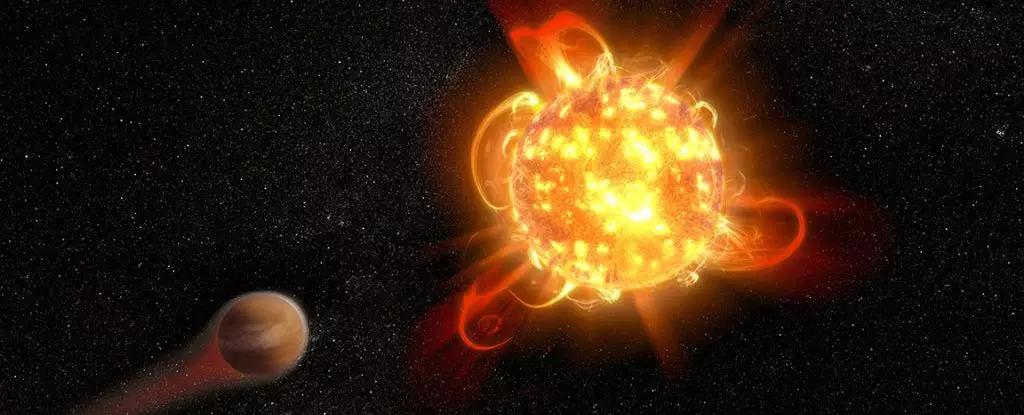M-class stars, commonly referred to as red dwarfs, have long intrigued astronomers and astrobiologists alike due to their unique characteristics and prevalence in the universe. These stars, which comprise about 70% of the Milky Way’s stellar population, are significantly cooler and smaller than our Sun. They burn through their nuclear fuel at a leisurely pace, which can lead to lifespans spanning billions of years. Their stability and abundance make red dwarfs prime candidates for hosting potentially habitable planets, particularly those situated within their habitable zones—the sweet spot around a star where conditions might allow for liquid water to exist.
The Allure of Isolation
Often characterized as benign celestial objects, red dwarfs have drawn attention for their potential to host rocky exoplanets where life might thrive. This allure stems not only from their long lifespans but also from the idea that planets orbiting these diminutive stars may enjoy stable climates shielded from the fluctuations seen in more massive star systems. Given the right orbital conditions—enough distance to maintain temperate climates but close enough for potential energy sources—scientists speculated that red dwarf systems could nurture life.
The Dangers of Flare Activity
However, the narrative around red dwarfs may not be as straightforward as it first appears. Unlike Sun-like stars, red dwarfs are notorious for their prolific production of stellar flares—powerful bursts of radiation and energy that can have catastrophic consequences for any nearby planets. A recent study has provided compelling evidence that these flares, characterized by their emission of ultraviolet (UV) radiation, could pose a far more significant threat to habitability than previously understood.
The study analyzed a decade’s worth of data from the now-retired GALEX space telescope, focusing on 182 flare events from red dwarf systems. The researchers found that the UV radiation emitted during these flares greatly surpassed the expectations set by traditional models, which have often treated stellar emissions as following a blackbody spectrum. This disparity indicates that the environmental conditions on planets orbiting red dwarfs could be far less conducive to life than once thought.
Ultraviolet radiation plays a complex role in the potential for life on other planets. While certain wavelengths can catalyze the formation of complex organic molecules—a necessary precursor for life—excessive exposure can strip away planetary atmospheres, including essential ozone layers that act as barriers against harmful solar radiation. The implications are significant: even if a planet meets criteria for liquid water, it may sustain a hostile environment exacerbated by frequent UV emissions that could destabilize its atmosphere.
The recent findings suggest that the standard model used to assess stellar flares may fall woefully short. By recognizing that 98% of the examined flares produced UV radiation levels above expected thresholds, the researchers argue for a reevaluation of what constitutes a hospitable environment in red dwarf systems. If these flares yield higher UV loads than identified in traditional models, the habitability’s fundamental assumptions must be revisited.
For astrobiologists, this shift in perspective carries significant weight. It prompts a reassessment of existing exoplanet candidates orbiting red dwarfs and raises questions about the potential for life in environments previously thought to be promising. If red dwarfs discharge high levels of UV radiation during flares, any planets in their orbit could be stripped of necessary conditions for sustaining any form of life, regardless of their other favorable features.
As research continues to unfold, astronomers must proceed with caution, recognizing the duality of red dwarfs: they may be abundant cosmic laboratories for life, yet also potentially lethal environments. The findings underscore the necessity for refined models of stellar emissions, as they directly impact our understanding of the universe and the conditions conducive to life beyond Earth.
The captivating world of red dwarfs and their potential to host life is fraught with complexities. While their long lifespans and abundance offer intriguing opportunities for discovering alien worlds, recent research compels us to confront the darker realities posed by stellar flares. As we strive to uncover the secrets of the cosmos, we must navigate the precarious balance between hope and caution, ensuring that our hunt for extraterrestrial life is guided by a robust and nuanced understanding of the environments we explore. The quest for habitable worlds continues, but the implications of newfound data significantly reshape the landscape of potential extraterrestrial habitats.

